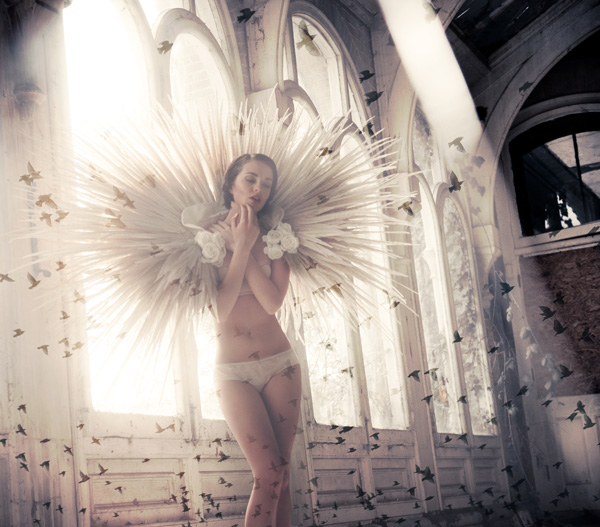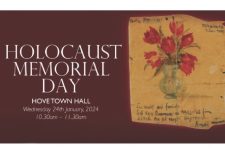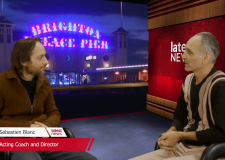Breaking into the arts & why they matter
This week I was asked for advice on breaking into the creative industries, and it got me thinking about the processes I’ve experienced. I champion the arts, I think they are the life-blood of our nation and our world. They are the world’s natural anti-depressants and healers. They let us express ourselves, and even do it for us when we can’t. Sadly, the UK doesn’t offer much support for the arts and the last few years has seen that dwindle to even less. In France if someone asks you what you do for a living and you say, “I’m an artist”, you’ll be revered. In England you’ll have eyes rolled at you and be made to feel worthless. Thankfully though, wherever adversity goes, the arts will thrive and when the arts thrive, so does the country.

A great microcosm of this exists in the property market. When an area is depressed and cheap the artists move in. They make it so interesting, vibrant and beautiful that within a few years young professionals begin to move in. They gentrify the area, the artists can’t afford it any longer and have to move on. Apparently, the new place to be is Deptford! Poor little artists.
“The arts are our world’s natural anti-depressants and healers”
When I’m asked for my tips by young people (I think that means I’m not so young any more) who want to get a foot in the door, I share my experience and contacts fairly freely, because people did the same for me when I was younger, and still do. We have a wealth of opportunity across the south. London is still where it’s at, but artists are delicate creatures that suit the cultural climate of the south coast. Here we have direct access to the vicious, beating heart of the country, but can enjoy the peace of the provinces… just as long as we don’t become complacent. A friend of mine once said to me that Brighton is “where 20-somethings go to retire.” Offensively accurate perhaps, so my first tip is to enjoy the good-life, but not too much.
Next thing to do is assess yourself honestly. What skills do you have, and what don’t you have? Once you’ve identified the skills you’re lacking, find out if you can develop them. If you can’t you need to be very honest and re-asses. I think most things can be learned through hard work and perseverance. I think talent counts for very little of the equation and actually, steady, thoughtful tenacity is what will see you through, but in some industries, for example modelling, or dance, you may simply not have the right genes. That’s tough if it’s what you really want to do, but what’s tougher is going through life never really achieving any of your goals. I had to give up a dance career because of the shape of my toes. The simple truth was that I didn’t have what it was going to take.
Once you’ve identified your skills and the areas where they are lacking, a great way to build up your skill-set and portfolio is to collaborate. I’ve chosen another microcosm to show you as an example, in the form of three fantastic creatives I’ve worked with over the years. Tess Dimos is a model, Luke Woodford is a photographer and Jess Eaton is a designer. These three are shining examples of how to do it. They just get on with it and they collaborate at every good opportunity. The image you’re looking at feature Tess modelling Jess’s Roadkill Couture, shot by Luke. None of them were paid for this, but the result has been that Luke’s collection of images, named Abandoned Fashion, has been featured by Italian Vogue thus giving all of them exposure, which leads to work. Tess is with MOT Models and Jess’s designs have just been featured on Kate Moss in Love magazine.
Then it’s important to listen, and not listen, to advice. Figuring out what advice to take and what not to take has been the most difficult challenge for me. I used to take everyone’s advice because I thought that everyone knew better than me, which led to very conflicting work. So then I took nobody’s advice, which led to some very bipolar work. Then I had an editor at The London Magazine, chap called Sebastian Barker, who made such minimal yet accurate edits to my poetry that it felt good, instead of bad. So the lesson I took from this was, listen to your instinct. It’s simple: good criticism should illuminate a path of action. Bad criticism is often given thoughtlessly, by someone who either thinks they have to find something to say about your work, or is projecting their own experiences onto it.
Finally, be selective, but not precious, professional, but not distant and most importantly have fun, play and enjoy yourself safe in the knowledge that you are making a constructive contribution to society.
Photographer: Luke Woodford
Designer: Roadkill Couture by Jess Eaton
Model: Tess Dimos
Hair and Make-Up: Rosie Lee
Page 3 girls
In addendum to my column last week I must now explain why I was on page three of The Argus with my baps out. Turns out Brighton ain’t as cool as I thought and the chintzy lampshade brigade want to turn my beloved, grimy, gorgeous city into Notting-Hill-On-Sea after all. We were asked to take Req’s mural down. We did, to be good neighbours – we don’t want to upset anyone. But we equally wanted to make the point that we fundamentally disagree that this beautiful, sex-positive image was offensive.

Quite frankly, I’m offended if you’re offended by the female form. I wanted to stand up for women everywhere, across the ages who’ve been told their beautiful bodies are shameful and obscene. So I put out a call on Facebook and Twitter at the 11th hour and a gang of babes and boys showed up and got their nipple tassels out in support of our ‘offensive’ girl before she was white-washed.
Neighbours happy(ish), point made, and I finally fulfilled my life-long ambition to be a page three girl. Win, win and win.




















